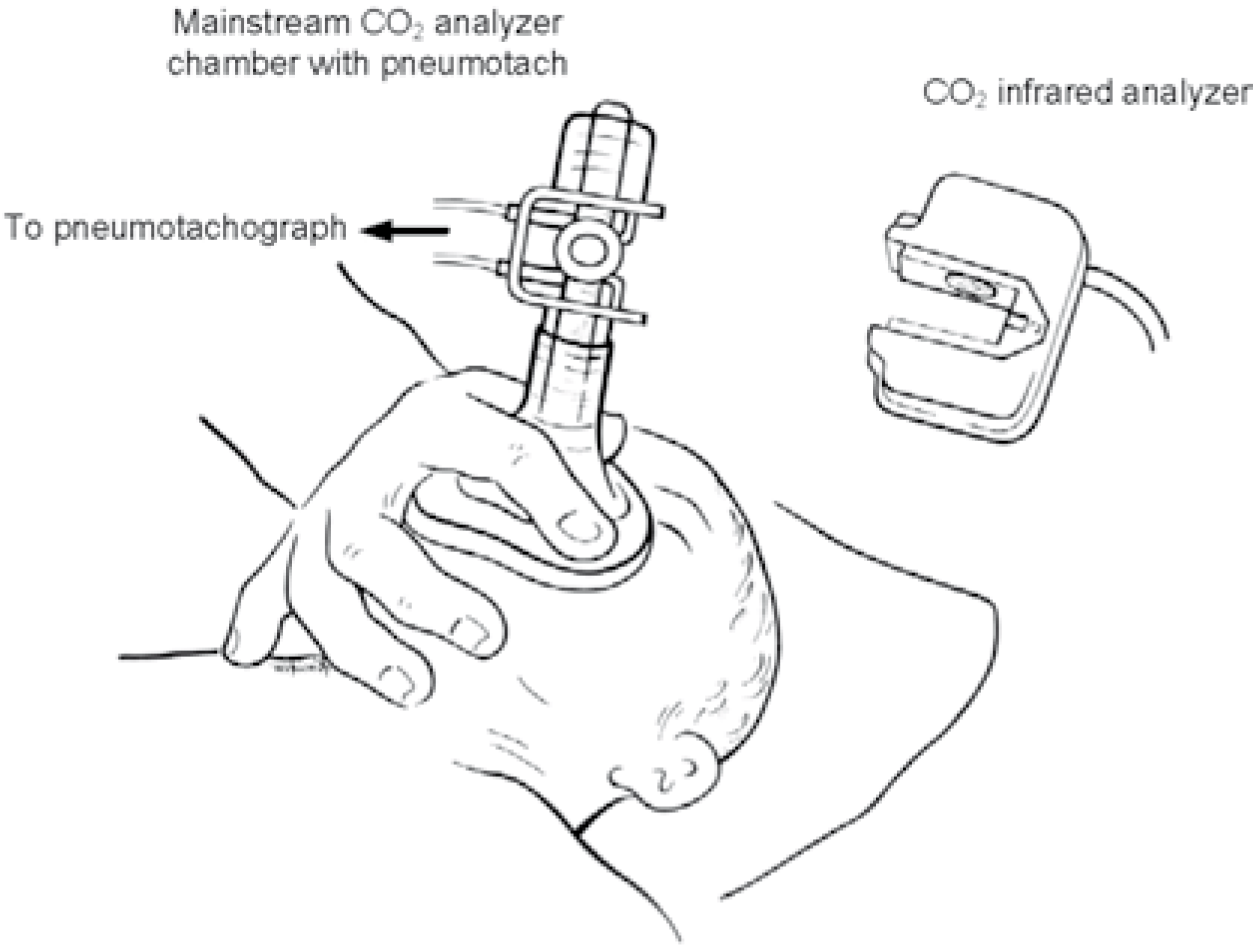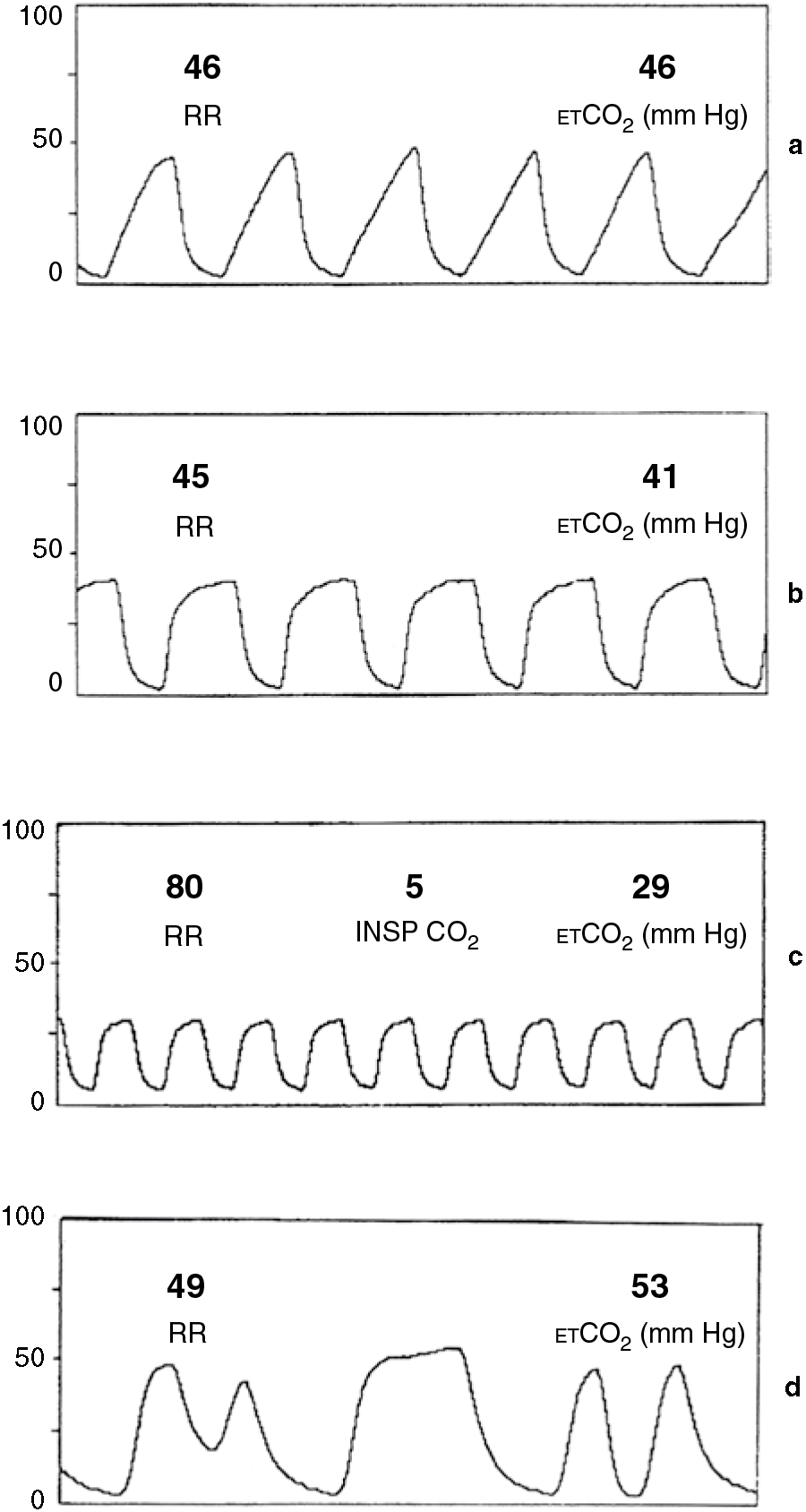normal end tidal co2 pediatric
During sedation capnography is often used to assess the breath-to-breath analysis of carbon dioxide concentration. The mean disposition EtCO 2 value was 333 mm Hg 95 confidence interval 326 to 344 mm Hg.

End Tidal Capnography Can Be Useful For Detecting Diabetic Ketoacidosis Monitoring Copd Acep Now
S Thompson A.

. Evaluation of an end- tidal CO2 detector during cardiopulmonary resuscitation in a canine model for pediatric cardiac arrest. So the short answer is you are right about the ranges 35-45 but that is for actual PaCo2 drawn from an ABG. Capnography measures the amount of CO2 present at the end of exhalation end-tidal CO2 or ETCO2 displays a waveform that represents air movement through the respiratory cycle and continuously.
Capnography is the measurement and monitoring of the partial pressure of carbon dioxide CO2 in exhaled breaths and it is often referred to as end-tidal carbon dioxide ETCO2 monitoring. Capnography measures the amount of CO2 present at the end of exhalation end-tidal CO2 or ETCO2 displays a waveform that represents air movement through. Each patient was monitored until a reliable 5-minute ETCO2 waveform was obtained.
In patients with normal pulmonary function CO 2 normally 35 to 45 mm Hg and ETco 2 should correlate closely with a deviation of about 2 to 5 mm Hg. PEFR measures were completed on 43 patients and PASS recorded on 100 patients. End-tidal CO 2 et CO 2 monitoring is not a new modality in the pediatric emergency department PED and emergency department.
This study was designed to determine whether end-tidal carbon dioxide ETCO 2 values obtained by noninvasive oralnasal cannula circuit with side-stream capnometry correlate reliably with capillary Pco 2 CapCO 2 in a pediatric population without cardiopulmonary problemsEach patient was monitored until a reliable 5-minute ETCO 2 waveform was obtained. When a person is breathing in it goes. Capnography monitoring as a clinician tool to help enhance patient care is used in multiple environments from the emergency room ER to the ICU.
Note that this gradient may be considerably higher in situations where there is an increase in dead space. In conditions of normal breathing 6 Lmin 12 breathsmin 500 ml for tidal volume etCO 2 is very close to alveolar CO2. Total lung capacity TLC is the volume of gas present in the lung with maximal inflation.
The mean initial EtCO 2 value was 35 mm Hg 95 confidence interval 343 to 361 mm Hg. S Thompson A. Pediatric Emergency Care 116 365368.
The normal tidal volume is 6 to 8 mlkg regardless of age. The modernday ability to measure ETCO2 and the insight it provides into human metabolism and cardiopulmonary physiology has been over a century in the making. The peak EtCO 2 value was greater than 50 mmHg in 761 869 of screening polysomnograms.
48 When a person is breathing out CO 2 the graph goes up. End-tidal carbon dioxide EtCO 2 variables by AHI severity levels. Since problems with lungs are not common and gas exchange between alveoli and the blood is swift and effective.
For a person with normal lungs the difference between end tidal and Paco2 can vary between 5-8mmHg depending on the book your reading. Many neonatal intensive care units NICU have converted to utilizing transcutaneous CO 2 tcP CO2 monitoringThis study aimed to compare perioperative Et CO2 to tcP CO2 in the. S Thompson A.
The normal range for TLC is 60 to 80 mlkg. It is the standard of care during certain procedures such as intubations and sedations and can be used in variety of clinical situations. Misting increased SaO2 Types of End-Tidal CO2 Qualitative Yes or No.
This study was designed to determine whether end-tidal carbon dioxide ETCO2 values obtained by noninvasive oralnasal cannula circuit with side-stream capnometry correlate reliably with capillary PCO2 CapCO2 in a pediatric population without cardiopulmonary problems. End-tidal CO 2 et CO 2 monitoring is not a new modality in the pediatric emergency department PED and emergency department. The normal end-tidal capnography wave form is basically a rounded rectangle.
As stated before end tidal is slightly different. End-tidal CO 2 Et CO2 is the standard in operative care along with pulse oximetry for ventilation assessmentIt is known to be less accurate in the infant population than in adults. Capnography can be used to measure end-tidal CO 2.
Pediatric Emergency Care 116 365368. Evaluation of an end-tidal CO2 detector during pediatric cardiopulmonary resuscitation. In modes that use expiratory tidal volume the default is typically 45 mLkg ie in neonatal settings 4 whereas it is typically 68 mgkg that use the inspiratory tidal volume ie adult and pediatric settings.
What is the tidal volume for a 1 year old. End-tidal CO2 monitoring is an exciting non-invasive technology that is more commonly used in the emergency department intensive care unit and in the prehospital setting. 2 See Figure 1 p.
There was an overall trend toward lower EtCO 2 values during treatment p 001. The Difference Between Arterial and End Tidal CO2. Evaluation of an end- tidal CO2 detector during cardiopulmonary resuscitation in a canine model for pediatric cardiac arrest.
To maximize the benefits of capnography a solid knowledge of all aspects of capnography measurements is required. Pediatric Emergency Care 116 365368. In infants and children breathing spontaneously the petco 2 values range from 36-40 mmhg9 normally petco 2 as sampled from the nasal cavity in neonates infants and children with healthy lungs breathing spontaneously is a good estimate of paco 2 2223 in infants and children the a-etpco 2 gradient can vary from - 065 mmhg to 24 mmhg22 in.
Evaluation of an end-tidal CO2 detector during pediatric cardiopulmonary resuscitation. Negative Epigastric sounds Equal lung sounds Esophageal detector End tidal CO2 detector Secondary signs. Circulating blood CO 2 is slightly greater than exhaled CO 2 due to a ventilation-perfusion VQ mismatch.
Second the choice of which phase of the respiratory cycle to use as a reference go hand in hand with the site of measurement. Its main use has been in verifying endotracheal tube position during mechanical ventilation and cardiopulmonary resuscitation but it is being studied and used for other purposes as well. Tidal Volume Vt is normally approximately 6-10 mLkg and 4-6 mlkg in the preterm.
However et CO 2 may be underused in the PED setting. Test of linear trend of AHI severity P 00001 for all categories. Under normal conditions the end tidal CO2 is usually slightly less than the PaCO2 with a normal difference of 25 mmHg.
Capnography waveforms etCO2 and breathing patterns. End tidal normally 2-5 mmHg lower than arterial Comparing Arterial and End-tidal CO2 Review of Airway Confirmation Visualization Auscultation. Evaluation of an end- tidal CO2 detector during cardiopulmonary resuscitation in a canine model for pediatric cardiac arrest.
S Thompson. Normal ETCO2 is in the range of 35 to 45 mmHg.

Association Between Etco2 And Paco2 In Infants And Children Download Scientific Diagram

Neonatal Monitoring Chapter 10 Capnography

The Impact Of Ventilation Rate On End Tidal Carbon Dioxide Level During Manual Cardiopulmonary Resuscitation Resuscitation

Pdf Capnography In Pediatric Critical Care Unit And Correlation Of End Tidal And Arterial Carbon Dioxide In Ventilated Children

Pdf Capnography In The Pediatric Emergency Department Clinical Applications Semantic Scholar

Respiratory Monitoring Department Of Pediatrics Uw Madison

Pdf Applications Of End Tidal Carbon Dioxide Etco2 Monitoring In Emergency Department A Narrative Review Semantic Scholar

Neonatal Monitoring Chapter 10 Capnography

Capnography For Kids 5 Applications For Ems Providers To Consider

Continuous Capnography In Pediatric Intensive Care Semantic Scholar

Association Between Etco2 And Paco2 In Infants And Children Download Scientific Diagram

Pdf Capnography For Monitoring End Tidal Co2 In Hospital And Pre Hospital Settings A Health Technology Assessment Semantic Scholar

Exhaled End Tidal Carbon Dioxide As A Predictor Of Lactate And Pediatric Sepsis The American Journal Of Emergency Medicine

A Systematic Approach To Capnography Waveforms Jems Ems Emergency Medical Services Training Paramedic Emt News

Capnography In The Pediatric Emergency Department Clinical Applications

Etco2 Valuable Vital Sign To Assess Perfusion The Airway Jedi

End Tidal Carbon Dioxide Recording Of Ventilated Children In Picu N 535 Download Scientific Diagram